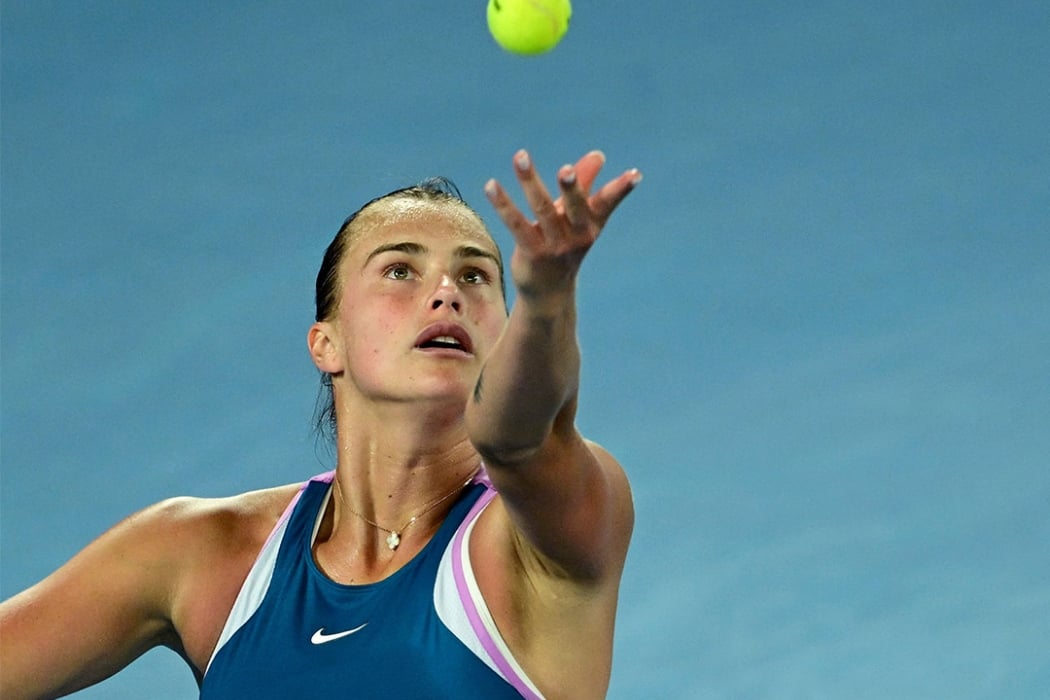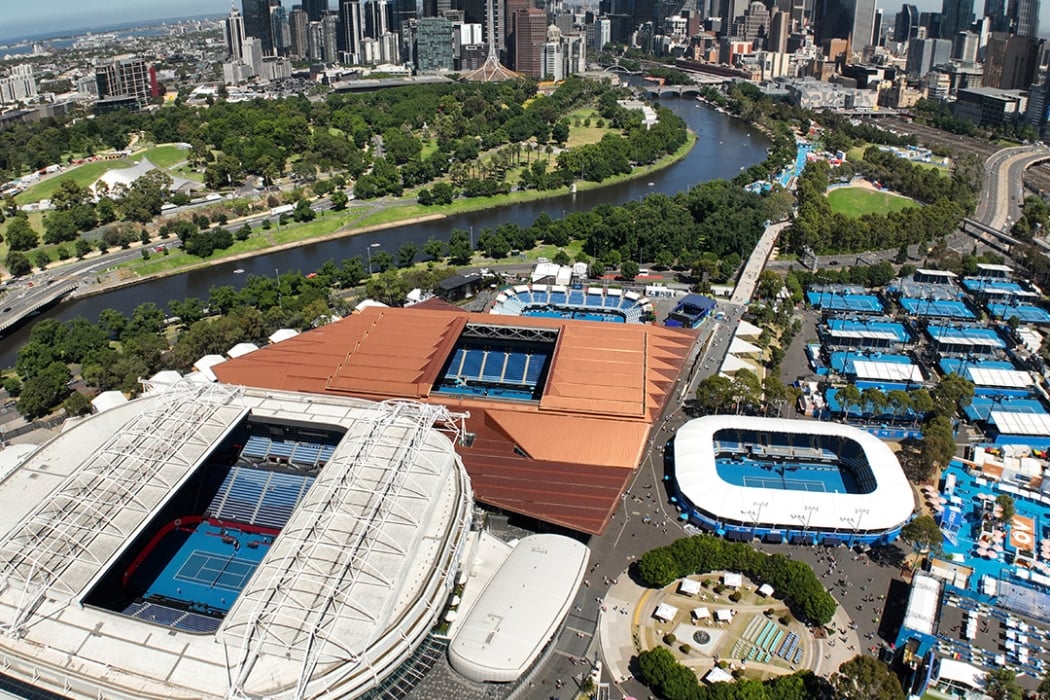Did you know that the Australian Open was previously played in New Zealand?
It’s true! But we should probably provide a little more context – it wasn’t actually called the Australian Open back then.
It was known as the Australasian Championships, and although the inaugural 1905 edition was staged not far from where it plays out today, Melbourne was not the tournament’s permanent home.
It used to bounce around various cities and venues each year until settling in Melbourne permanently in 1972 – but even then, the AO was not played where you watch it unfold now.
This is the story of the Australian Open’s many homes, and guises, as we prepare to celebrate its 120th anniversary in 2025.
Australasian Championships
The 1905 tournament was held at the Warehouseman's Cricket Ground, a venue now known as Albert Reserve and which serves as a player practice facility during the AO.
But in 1906 the championships headed to Christchurch, New Zealand, a move connected to Davis Cup.
PRICELESS MOMENTS: Win great prizes with Mastercard
For Australia to compete in the international team competition, its players were required to represent an officially-recognised national tennis federation. The Australian Open Book explains: “The Australasian Lawn Tennis Association was duly formed in 1904, the inclusion of New Zealand alongside Australia’s representative states largely due to a promising British-based New Zealander, Anthony Wilding, who was drafted into the team.”
And thus we had the Australasian Championships, which did not return to Melbourne until 1911. In between it headed to Brisbane (1907), Sydney (1908), Perth (1909) and Adelaide (1910).
But none of those championships were staged at venues that would later become iconic Australian tennis facilities. The Brisbane event in 1907 took place in the suburb of Auchenflower, while the Sydney 1908 tournament played out at both the Sydney Cricket Ground and Double Bay Grounds. Perth Zoo’s courts hosted the 1909 championships before the tournament headed to Adelaide Oval the following year.
The Australasian Championships resumed in 1919 after a three-year absence caused by World War I. But they were actually played in January 1920 at Adelaide Oval, and then just two months later the 1920 championships were staged in Perth – only this time at Kitchener Park.
More permanent homes
The 1922 Australasian Championships were notable; it was when the women’s singles competition joined the program of events, and when the tournament was staged for the first time at White City in Sydney.
White City remained the tournament’s Sydney venue until the early 1970s – one of several purpose-built tennis complexes in Australian capitals that came to host the AO, select Davis Cup ties and tour-level tournaments.
In 1923 the Australasian championships returned to Brisbane, but this time at the famous Milton Courts. In 1926, when it headed to Adelaide, the venue was Memorial Drive – today the site of the Adelaide International.
Australian Championships
In 1927, the tournament became known as the Australian Championships, “the first year … without the organisational involvement of New Zealand,” according to the Australian Open Book.
And it was also the first year it was held at the Kooyong Lawn Tennis Club. This had begun springing up as a collection of courts and a clubhouse earlier that decade, but 1927 was when the iconic horseshoe-shaped stadium court opened.
From 1927 to 1955, the Australian Championships moved between Melbourne, Sydney and Adelaide, before Brisbane rejoined the rotation in 1956. The four state capitals then shared hosting duties until the late 1960s.

The Australian Championships of 1968, held at Kooyong and won by Bill Bowrey and Billie Jean King, was the last tournament with entry restricted to amateur players.
Australian Open
From 1969, the event became known as the Australian Open – welcoming both amateur and professional players.
This milestone tournament was staged at the Milton Courts, the last time Brisbane would ever host the event.
In 1970 and 1971 the tournament was staged at White City, making Sydney the first city to ever host the event in consecutive years.
HONOUR ROLL: Australian Open men's singles champions
But the picture was not completely rosy, as retold in the book Our Open – 100 years of Australia’s Grand Slam.
“While Australian fans embraced the sport as the country’s elite players dominated throughout the 1960s, public and player interest in the Open waned throughout the decade that followed,” the book explains. “For a variety of reasons, including the timing of the tournament, many of the best players from overseas no longer included Australia on their annual schedule.”
Making Kooyong home
When the Australian Open headed to Kooyong in 1972, that’s where it stayed.
“[The event’s previous] transience certainly didn’t help it establish a loyal fan following,” explains the Australian Open Book. “It was Kooyong’s relative popularity with fans that decided the state’s foremost tennis club as the permanent home of the Australian Open.”
That 1972 event was won by Ken Rosewall – who at 37 years and 62 days remains the oldest Grand Slam singles champion in tennis history – and Virginia Wade.
HONOUR ROLL: Australian Open women's singles champions
The AO remained at Kooyong for the next 15 years, yet there were some calendar quirks. Australian Open 1977 was played in January, before a scheduling change moved the tournament to December, where it was played for a second time in 1977.
It remained in its December time slot until 1985, then was rescheduled to January, meaning 1986 was skipped entirely and the tournament resumed in 1987.

The January 1987 tournament was the biggest yet. The men’s and women’s singles events were now both 96-player draws, the fields were star-studded – think Lendl, Becker, Noah, Edberg, Navratilova, Mandlikova and Shriver – and a record 140,000 fans came through the gates.
It had outgrown Kooyong. “Talks about upgrading the club to Grand Slam standards fell through,” documents the Australian Open Book. “So… [Victorian Premier John] Cain launched the search for a new site on which to construct a purpose-built tennis complex.”
The move to Melbourne Park
That site was Flinders Park – renamed Melbourne Park in 1996 – and where the tournament has been played ever since.
Australian Open 1988 was the first tournament staged in the new venue, a gleaming, modern, spacious facility that attracted more than 250,000 fans.
The jewel in its crown was a 15,000-seat Centre Court with an innovative retractable roof; this would be renamed Rod Laver Arena in 2000.
Throughout its 37-year history Melbourne Park has undergone multiple upgrades; first in 1996, then the addition of John Cain Arena in 2001 and more recently a multi-stage redevelopment that has made it one of the finest sporting complexes in the world.
Attendance at Australian Open 2024 exceeded one million spectators – a far cry from the comparative handful that attended the very first championship in 1905 at the Warehouseman's Cricket Ground.
HISTORY OF THE AUSTRALIAN OPEN



